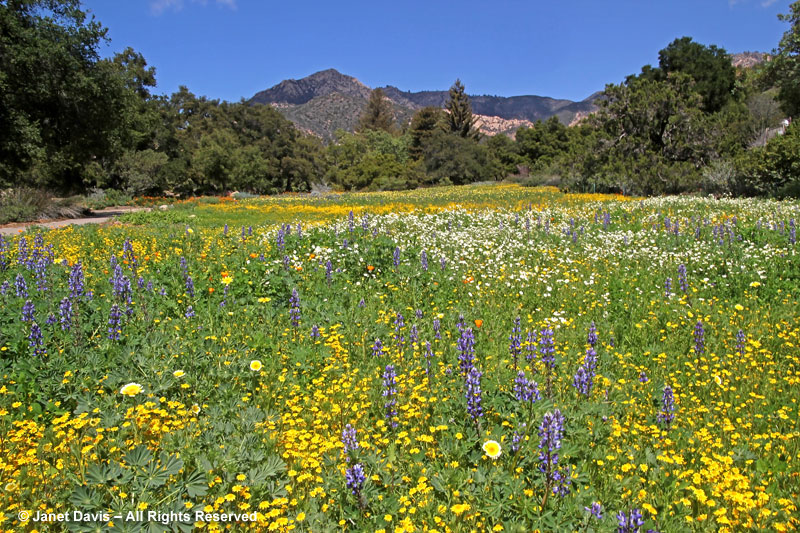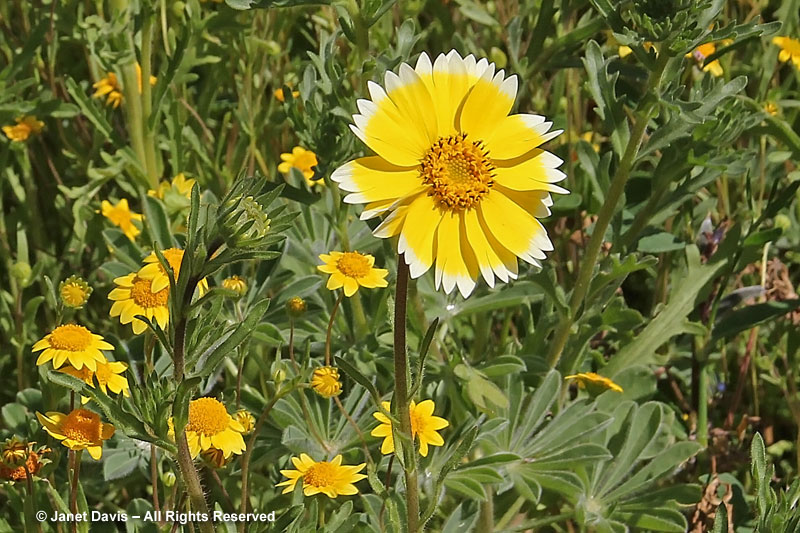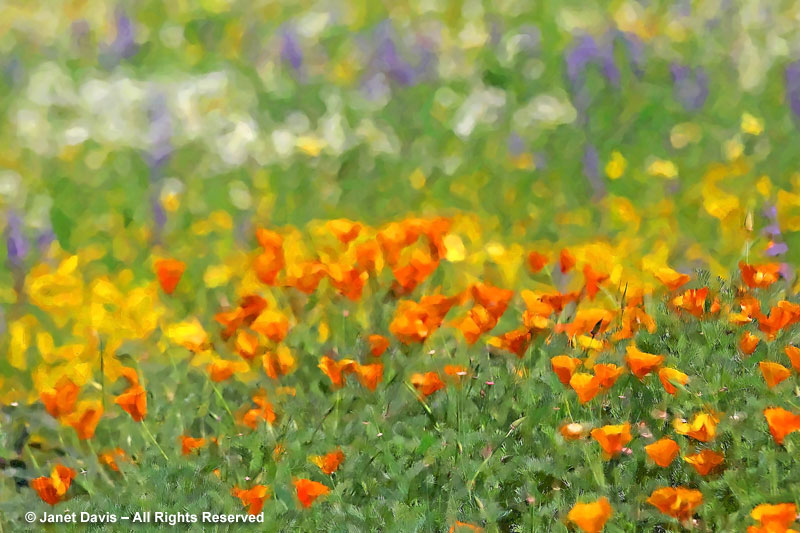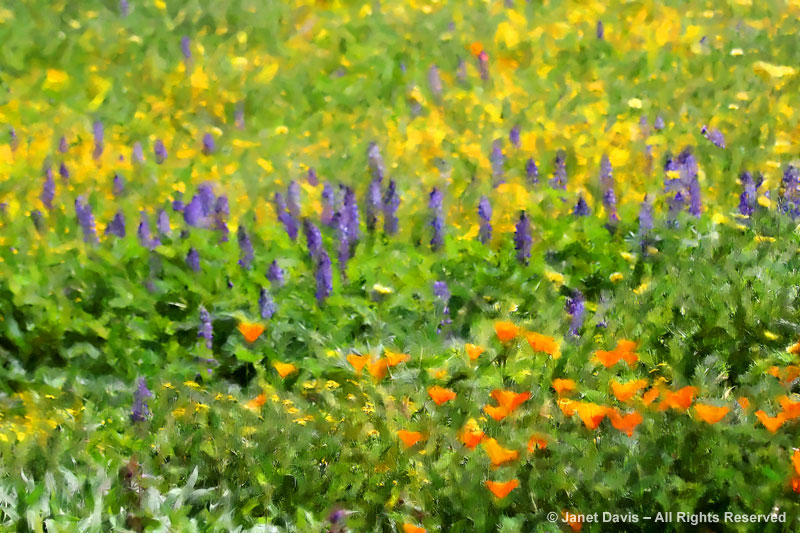When I visited the Santa Barbara Botanic Garden in late March (on a special tour with my Facebook friend Frédérique Lavoipierre), the main event for visitors was the iconic meadow that greets them as they enter the gates. ‘Spectacle’ is an understatement, for this flowery expanse stretches back towards a shrubby border in the near-distance, live oaks in the mid-distance and the rimmed Santa Ynez mountains on the far horizon. It’s an impressionist masterpiece painted in sunshiny California spring hues.
So perfect is the composition, the vertical brushstrokes of blue succulent lupines (Lupinus succulentus), yellow tidytips (Layia platyglossa) and orange California poppies (Eschscholzia californica) rising from the brilliant background wash of goldfields (Lasthenia californica), that it surprised me a little to learn that the meadow is actually just halfway through a major renovation. Or perhaps that should be a return to its historic roots.
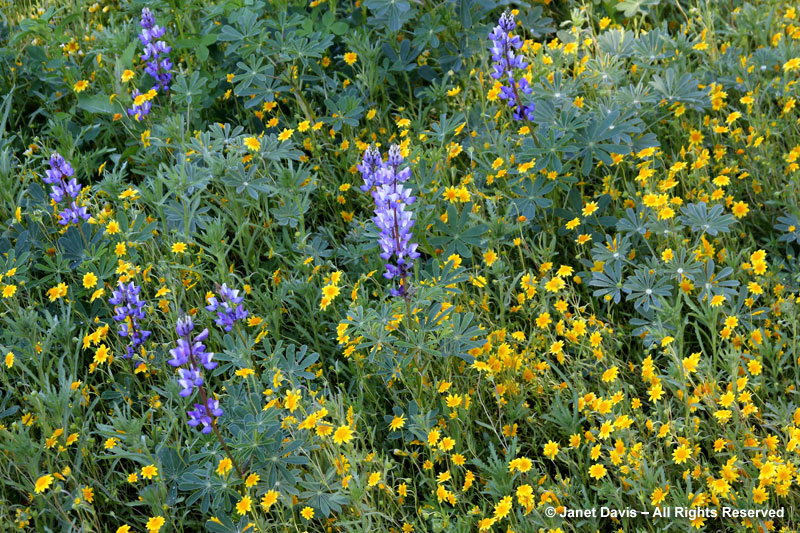
A classic blue-and-yellow spring combination of succulent or Arroyo lupines (Lupinus succulentus) in a carpet of goldfields (Lasthenia californica).
Meadows are relatively easy to make and impossibly difficult to maintain. Ecologically (that is, with no human interference and excluding stable alpine meadows), a meadow is usually just a pretty way-station on the evolutionary path to climax, meaning every native shrub and tree is itching to shoulder aside all those charming annuals and perennials and transform the sunny painting into shady woodland. Then there is the more immediate problem of exotic invasives, weeds that fling themselves into the sunny space and soon outcompete the natives, ruining the show and causing a headache for public gardens hoping (or mandated) to treat pests and weeds organically. Drought is an issue, especially in a place like Santa Barbara, where an official multi-year drought makes irrigation of the meadow necessary. Finally, a meadow in a public garden can suffer over time from the conflicting objectives of the people who oversee it.
Historically, the meadow began in 1929 as Bermuda grass – “a grassy space across which one looked at the mountains – an interval of green silence amid chords of color.” In the 1940s it alternated between beach strawberries (Fragaria chiloense) and annual wildflowers; it spent the 80s as a mix of grasses and wildflowers; then in the past decade, took a strange left turn into patches of mown lawn that undermined the integrity of its early design.
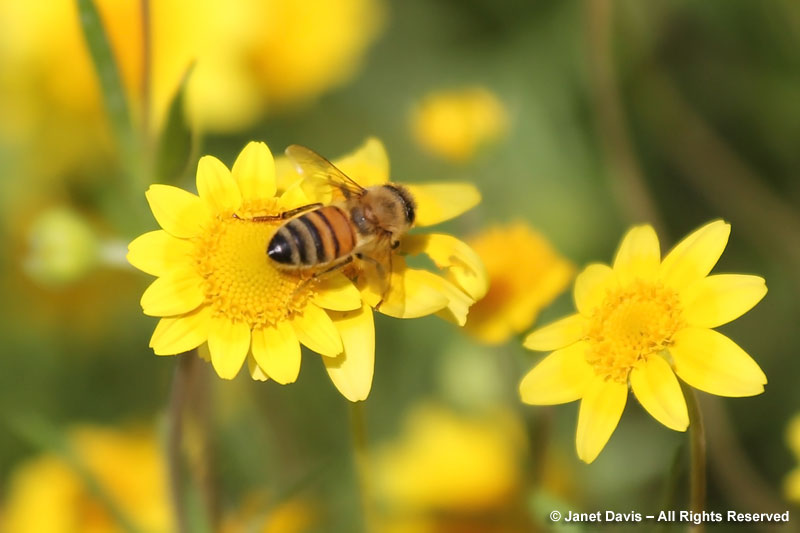
Unlike most native bees, honey bees are flower-faithful, meaning they seek nectar and pollen from one flower species at a time. The millions of tiny blossoms of goldfields (Lasthenia californica) in the meadow offer a rich food source for them and the native pollinators.
Recognizing all that, SBBG developed a new plan for the meadow, an approach designed to provide a “homogenous mix of species that provides seasonal color, year-round interest, educational opportunities, and reduced maintenance.” However, wrote Betsy Collins, Director of Horticulture, in the garden’s Summer 2013 newsletter, “it is important to try a new approach if we hope to avoid the weedy outcome that has resulted from so many previous efforts.”
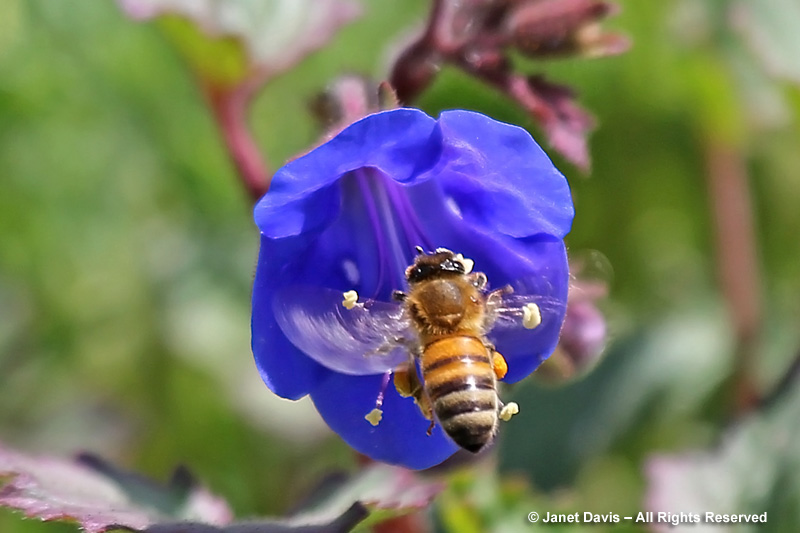
A California bluebell (Phacelia campanularia) in the meadow gets a visit from a nectaring honey bee.
She went on: “Drawing on the expertise of our Executive Director, Dr. Steve Windhager, a grassland ecologist, and Conservation Manager, Denise Knapp, a restoration ecologist, we intend to develop a comprehensive weed abatement plan that uses the principles of habitat restoration.” Weed-abatement methods to eradicate bindweed, Bermuda grass, oxalis, etc. include solarization (plastic sheeting to heat and kill weeds, seeds and pests) and grow-till-kill cycles where weeds are encouraged, then tilled, the process repeated until the weeds are gone.
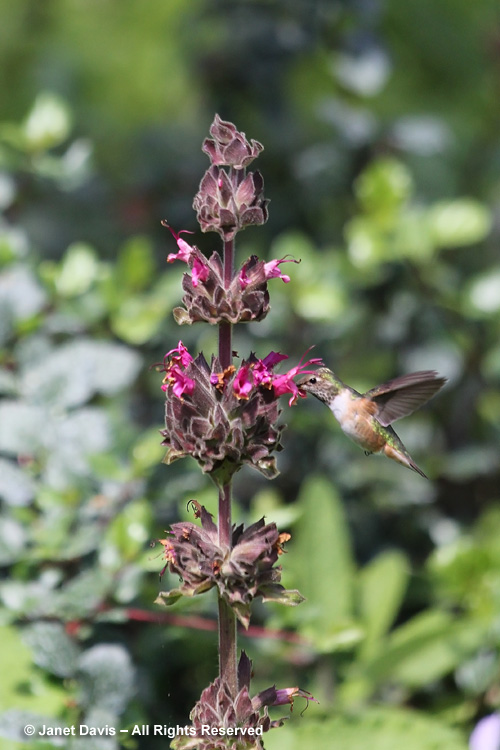
Appropriately, a hummingbird nectars on hummingbird sage (Salvia spathacea) in the border at the back of the meadow.
What I saw in March at SBBG was the brief glory of the spring wildflower show – a brilliant extravaganza pleasing visitors and pollinators alike – before the designers get back to work on their mission. The new meadow will feature lots of new plants, says Collins: “We anticipate growing upwards of 70,000 grass and perennial plugs for planting in the fall of 2014. Any remaining weeds that appear will be removed by hand while the plugs are established. A blanket of annual wildflowers will be seeded in early winter for a spectacular show in the spring of 2015!”
During my visit to SBBG, the sun shone so brightly most of the day that the plants were difficult to capture in a good photo. But I made lots of images anyway, and found they lend themselves to the art filters that can transform so-so pictures into colourful impressionism.
Special thanks to SBBG Education Program Manager Frédérique Lavoipierre for giving me the grand tour.
Santa Barbara Botanical Garden is open daily. Check their website www.sbbg.org for information.

